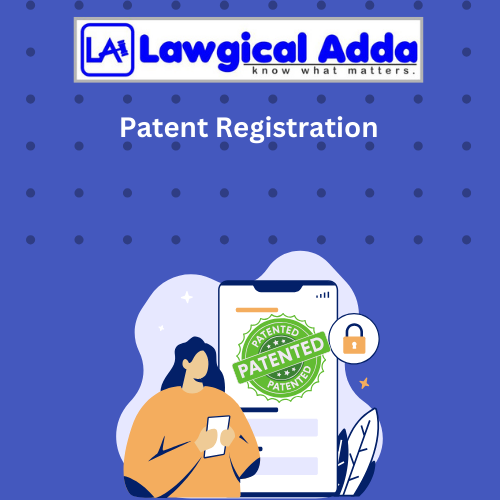
Patent Registration Process in India
Patent Registration is not an easy procedure but Lawgical Adda is here to help you out!
Documents Required:
- Application form (Form 1) in duplication
- The complete specification must be submitted (Form 2)
- The invention's abstract
- Details and undertaking stating, in duplicate, the number, filing date, and current status of each foreign patent application (if any) (Form 3)
- When instructed by the Controller, the priority document (if the priority date is claimed) in a convention application, the Declaration of Inventorship in cases where the complete specification follows the provisional specification or the Form 5 in the case of a convention/PCT national phase application
| Pricing Summary | |
| Service Price: | ₹15000 |
| GST: | ₹2700 |
| Total | ₹17700 |
| Place Order | |
Have a Question?
Patent Registration Process in India
Inventions can apply for patent registration in India through the India Patent Office (IPO). When a patent is registered, the applicant has monopoly rights over his or her invention for the duration of the patent. This step-by-step guide will walk you through the entire process of registering a patent in India, should you need to file one.
A Patent: What Is It?
A patent is a legally binding document issued by the state or federal governments, subject to national regulations. For a predetermined amount of time, it grants the inventor the sole right to produce, use, and market their invention.
This system's primary goal is to motivate inventors to protect their works of art. Specific works of art, films, and books are not patentable. However, copyright law offers protection for these assets. Patent law is a subset of the broader legal area known as intellectual property, encompassing copyright and trademark law.
What is the Process for Registering a Patent in India?
The following procedures are part of the patent registration process in India, which ensures the protection of authors' and artists' intellectual rights:
- The first step is to make an application (Form 2) for a patent that reveals the innovation. This application should include a synopsis of the work, claims outlining the secrecy sought, and, if applicable, information about the innovation.
- Once the application is finished, submit it online or offline to the Indian Patent Office (IPO) to begin the registration procedure.
- Within 18 months of the filing date, the patent petition is published in the Official Journal of the Indian Patent Office following application submission by the IPOs.
- A request for examination must be processed within 48 months of either the priority date or the filing date, whichever comes first. During that time, a search report may be conducted to locate prior artwork connected to the creation.
- The patent grant is published in the Official Journal after IPO satisfaction, and the inventor is given a patent certificate in return for depositing certain fees for the patent registration.
Features of Patent Registration
Legal Security
In India, registering a patent gives the patented invention legal protection. If other people or businesses violate it, it may be presented as evidence in court. Therefore, patent registration is essential for the product to have legal protection.
Enhanced Income for Businesses
Patent owners can raise their business revenues by charging more for their patented products. The inventor of a patented product can charge more than its rivals because the product is likely to be standardised in accordance with government regulations.
Establishment of Asset
Being an intellectual property, a patent is an owner's intangible asset. The patent holder may profit from the patent by selling, franchising, or entering into commercial contracts.
Competitive Advantage
You will have an advantage over rivals if you register your patent in India. The innovative product cannot be duplicated or repurposed by rivals. This will guarantee that for a number of years, your business will be ahead of its competitors.
Details Are Necessary
- Application form (Form 1) in duplication
- There are duplicates of the complete or provisional specification. Within a year of the filing of the provisional specifications, the complete specification must be submitted (Form 2)
- The duplicate invention's abstract
- Details and undertaking stating, in duplicate, the number, filing date, and current status of each foreign patent application (if any) (Form 3)
- When instructed by the Controller, the priority document (if the priority date is claimed) in a convention application, the Declaration of Inventorship in cases where the complete specification follows the provisional specification or the Form 5 in the case of a convention/PCT national phase application
Registration of Patents: Expert Support
Both individuals and legitimate businesses can submit direct applications for patent registration to the Indian Patent Office (IPO). The patent registration procedure might be challenging to understand and may require specialized training in patent law and procedures. Legal and technological difficulties may arise. Though people and companies can apply for patent registration on their own, some would rather employ the assistance of specialists or patent agents to guide customers through the full registration process.
Lawgical Adda can advise you on maximizing the value of your patent registration and obtaining a patent for your idea. From the beginning to the conclusion, our knowledgeable staff will handle all aspects of the patent registration process. You may be confident that your groundbreaking invention will be acknowledged and that we will uphold your legal rights. Get in touch with us right away to receive the skilled assistance of our team at affordable prices in effectively filing intellectual property.